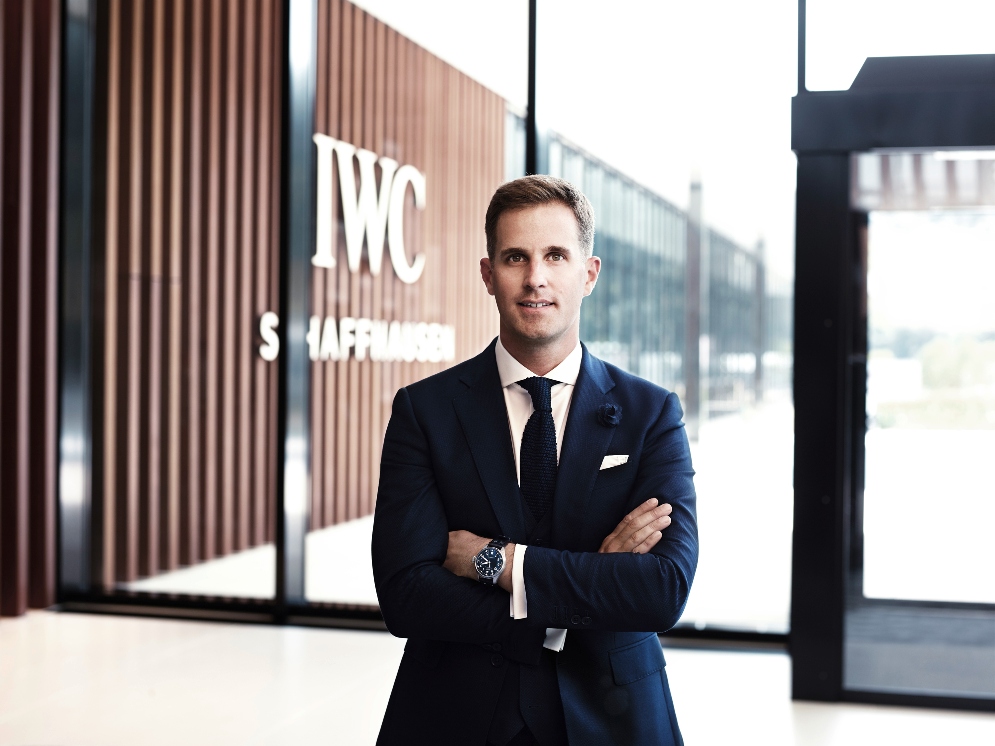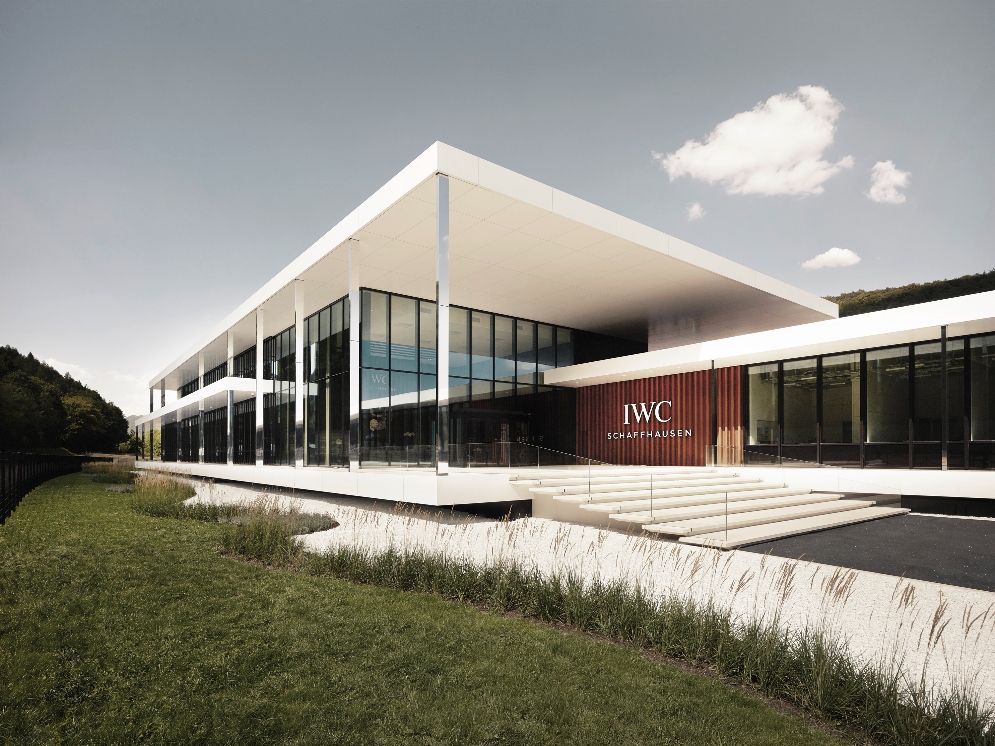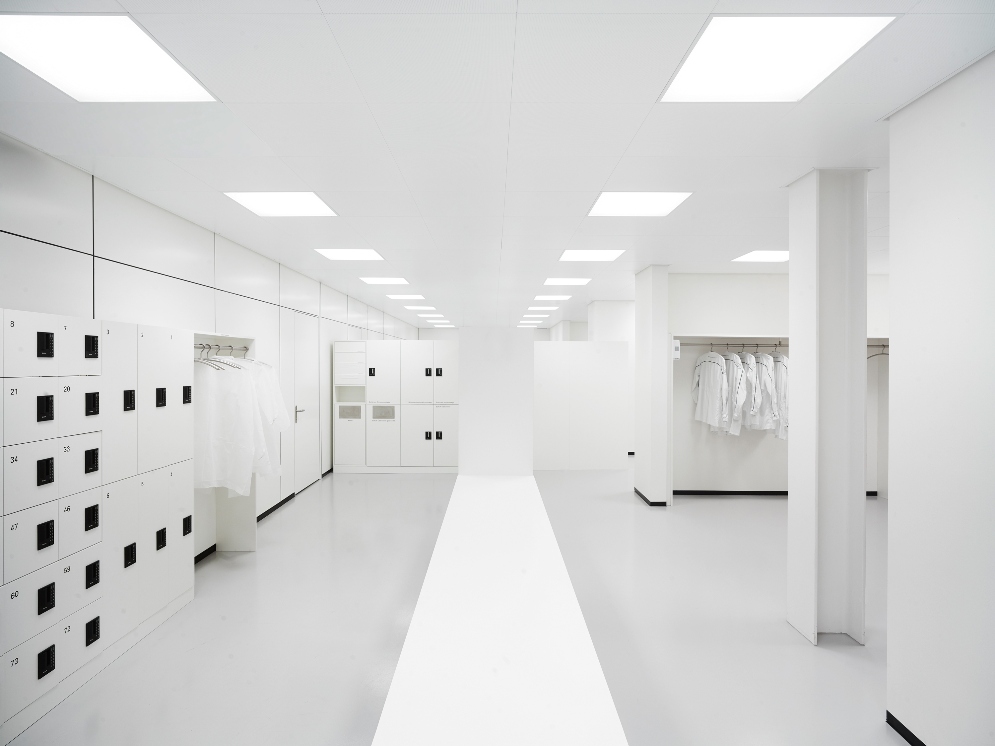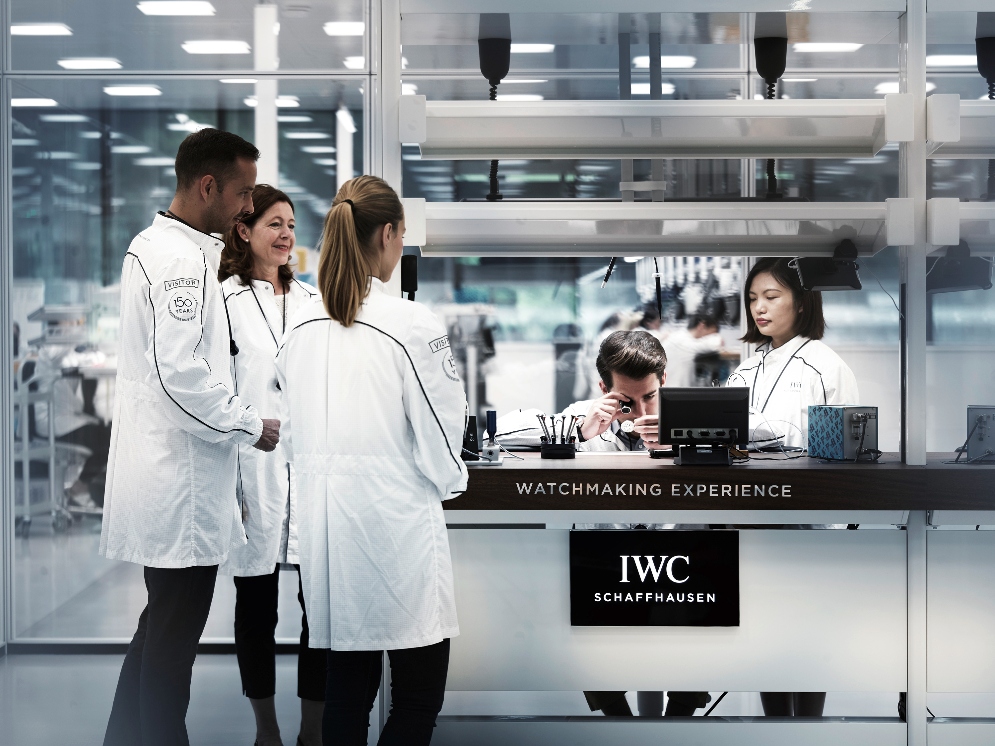
Most readers are aware that the majority of Swiss watches are made in the French speaking part of Switzerland. Swiss-made watch enthusiasts may even believe that Switzerland is a French-speaking country. The Romandy is so dominant that a casual watch enthusiast might mistakenly think Schaffhausen to be a German town. IWC is as Swiss a company as you can get. Since the manufacture is quite a ways off the beaten path, plenty of watch journalists actually miss out on visiting – getting here from Geneva is more challenging than getting to the La Chaux-de-Fonds, for example. We jumped at this opportunity when we were asked to come in the middle summer.
I meant Ruckdee Chotjinda, myself, and our IWC watch. This was the only second time that I had been able to bring home a new watch. Ruckdee had also brought his IWC, a Portugieser Perpetual Calendar made of red gold. Readers may remember that Walter Volpers, the IWC Manufacture Director, was on the same trip as me. I mentioned the moment that he recognized our watches during the conversation.
The traditional evolution of manufacturing buildings is that they expand over time beyond the original confines. If you read the stories in this issue in order, you’ve already seen some of them. IWC Schaffhausen (which we’ll call IWC for simplicity) has been located in the old city of Schaffhausen for some time. The brand has offices here, as well as the CEO Christoph Herr-Granger and the communications team. There is also a small museum. It is also where a pivotal scene in this story will take place, starring Ruckdee’s watch. It will not be until the end because, to use the Swiss German language, we have a lot of ground to cover.

Imperative Presence
In 2018, the brand celebrated its 150th birthday. The new facility opened at a time that was auspicious. IWC has the option to decide how it wants to address the production challenges in the future. This is exactly what Florentine Jones, the founder of IWC, wanted to do in the early days. The manufakturzentrum also happens to be an excellent workplace to visit, without much of the upstairs-then- downstairs-just-to-go-up-different-stairs hikes that are typical of many Swiss manufacturers. To get a feel for the old office, you can visit it in town. The building is a completely new construction with a total of 13,500 square meters. This can be seen in the large entryway, which has meter-high ceilings, and two levels.
The atmosphere is warm and welcoming. Everything is easy to understand, as there is a clear path for you to walk. The grey areas in the pictures are the places where visitors can walk. While the white areas represent the workspaces of technicians, engineers and watchmakers. This is a nice way to see everything and not feel guilty about invading people’s workspaces. The flip side of this is that you will not be able to peer over someone’s shoulder as he or she affixes a hairspring to a balance wheel. We are getting ahead ourselves.
It was only natural that we started with CNC machines because all the components are made this way. IWC’s Ingenieur collection is a professional-looking watch, and you can tell by the photos that IWC succeeded in this regard. Again, the downside is that the sense of homey craftsmanship is missing – production lines are production lines after all. In one of the stories he wrote about his visit to a manufacturer, Robb Report Singapore’s editor noted that the aroma of oils still fills the air in modern manufacturers. The manufakturzentrum was no exception. The industrial feel is appealing.

Maximum Punishment
We will take a moment to highlight a major point before we move on. We were able to enter the area of quality control, which is a rare opportunity for a tour. There are all kinds of torture instruments that are used to punish finished watches to their maximum. It is a common practice at reputable watchmaking companies, but it’s rare to get a glimpse of this activity. As we noted in our Conversation article in the Autumn edition, it was fascinating to watch the team send watches flying in a net by using a hard hammer.
The idea behind quality control, or better yet, quality assurance, goes beyond the perverse pleasure that comes with a little pain on a very expensive object. Instead, it is about proving the watches’ toughness to withstand the punishment you are going to subject them to. IWC’s watches are tough as nails, and we can confirm that. IWC watches are not all tested in the same way, but samples from different production batches will be. The smiling technicians here are extremely thorough and enthusiastic about their work.
Moving back into the order of the tour proper, IWC takes pains to showcase its materials section, where there is that satisfying moment of holding rods of raw material in one’s hands. The bar-turning or milling that takes place at the manufakturzentrum involves a variety of operations. IWC claims that around 1,500 components are produced in the workshop. The parts are said to be for all calibre families 52, 82 and 59 (manual winding with 8 days of power reserve), and 69 (automatic Chronograph). This includes movement components and the case for a Portugieser Grande Complication (which is also made in the basement, along with the rest of the IWC cases).

Assembly Required
The calibre 52 family is a good example of this. A robot with an articulated arm feeds raw materials like these into a CNC that then produces the finished component. The manufakturzentrum is also where the complex watches are assembled and the components of the complicated watches are produced. Robots do indeed assist in the assembly of movements, but the assembly of components is done by watchmakers. IWC states that the production lines of each calibre are in complete accordance with what founder Jones imagined in his time. No one in the 19th Century could have imagined 21st century engineering techniques! We are not focusing on cases here, but according to Time & Tide Watches, a metre-long piece of material can be used to produce 30-50 cases.
In the final phase of the tour, we returned to the origins of watchmaking with the disassembly of a pocket watch movement. The IWC tour was the sole one in this section. Previously, this activity was part of many manufacture tours. It is always an eye-opening and fascinating experience to see how tiny machines are assembled from tiny parts. We strongly recommend that all manufacturers return to this tradition, if for no other reason than context.
The activity of producing calibres in-house is done in a clean room, which is the norm for modern manufacturers. The guests and journalists are unable to see the assembly process, which is why we believe that the importance of watch assembly activities. Clean room environments are not exactly the same for silicon wafer manufacture, but they’re close.

Personal Touch
The manufakturzentrum is our last thought. It is an impressive structure, and it is sure to reflect IWC’s character. Its massive windows provide an abundance of natural lighting for the watchmakers who assemble movements. It is designed to be a bit too large, but that’s because it can house 400 employees (currently 230 work here), so it was built for the future. The manufakturzentrum, designed by Zurich architects ATP was also designed by CEO Herr-Granger who is a trained architect.
Manufakturzentrum is a model of sustainability, too. Solar panels are installed on the roof and groundwater is used for cooling and heating. The history of IWC is reflected in this decision, with the founder FA Jones selecting Schaffhausen because of its hydroelectric power.
On that note, it is time to return to Ruckdee’s watch, which had a bit of an issue – residue of oil leftover from servicing, on the hands. After inspecting the watch, the IWC watchmaker asked Ruckdee simply to leave it in his hands and come back later. Ruckdee was very pleased. It is clear that the human element makes all the difference in the world, regardless of the technology that goes into the watches.
This article was first published on WOW’s 2024 Legacy Issue
Click here to learn more about the latest.